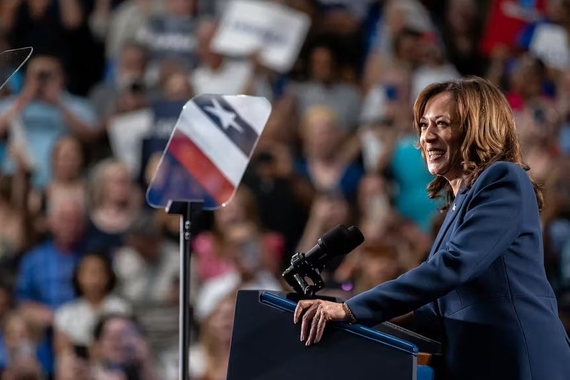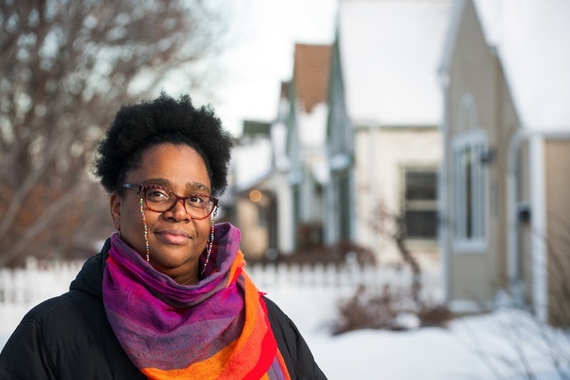The Edge of Impossibility
Acres of farmland in Minnesota are being transformed into ones and zeros—language that a computer can understand. Eric Shook, assistant professor in the Department of Geography, Environment, and Society, is using geospatial computing to make data on cropland a usable resource for research, policymaking, and uses yet to be uncovered.
Can you describe your research field, geospatial computing, and some of its challenges?
Geospatial computing, my area of research right now, is just trying to capture the world in the ones and zeros of a computer. One challenge is that computers really only understand two numbers, ones and zeros, which we call binary. So the challenge is to take the world out there—the people, the places, the vehicles, the animals, the processes throughout our environment—and trying to cram them all down into a series of ones and zeros that the computer understands.
I think the other big challenge is to understand what's possible. Computing, just like technology, has advanced at a rapid pace. If you think about the internet, cell phones, the desktop that sits on your desk at work or at home, it has increased at a rapid pace. What was impossible 20 years ago is an everyday task now.
So oftentimes when we're faced with new research questions, we have to figure out “is this question possible to answer?” And, oftentimes, the first response is “no, that's an impossible question.” But usually, it's that we haven't come up with the right approach or that we haven't looked at the problem from a new angle. So oftentimes with my work, the biggest challenge is trying to figure out where the edge of impossibility is and trying to push it into a new edge. And that's where the exciting research happens.
One of the exciting things that I've been working on is trying to come up with a programming language for geospatial computing, which gives researchers a way to express and to communicate the way that they think about the world in a way that a computer can understand, can process the data, can simulate the process, can visualize the result, can plot out the data. I think that that's at least one step toward making an advance in our research.
What is unique about your work?
What's unique about my work is that there are very few people in the world who know how to program supercomputers, a few hundred around the world perhaps. People who really understand it in depth probably number in the tens, but it's definitely growing.
With my background in computer science, I have this really deep understanding of how a computer works, and especially how a supercomputer works, and with my education in geography, it's given me a really deep understanding of how the world works. I think combining those two things, understanding the world and understanding computers, enables me to do things that are quite difficult for other people perhaps.
Can you describe your work on the Minnesota farm field project?
The project I’m working on now, the Minnesota farm field project, started off with a grand idea of trying to map every single farm field in the world [using supercomputers], and trying to capture not just where a crop might be grown, but in which field and how big is the field? Where is the field, what's its shape?
Naturally, you have to start somewhere. So we partnered with CURA, The Center for Urban and Regional Affairs, along with the Institute on the Environment, to try to map out every single farm field in the state of Minnesota, which we are getting very close to doing. Our final map should be coming out in the next couple of months, and will be available for free, for anybody in the world, but especially those residents in the state of Minnesota, to be able to see all of the fields and to work with the data themselves if they're interested.
How does this benefit Minnesota?
The hope is that Senator Amy Klobuchar's office or the state of Minnesota, whether that be agriculture or environment, will be able to use the data in order to either improve agricultural practices or research partnerships with the University of Minnesota, where you get researchers working with farmers, decision-makers, and environmental agencies in order to really make good use of the land that surrounds us.
As soon as we have the full data set we'll be sending it to her office and potentially to the state legislature. If it turns out that the data seems to be useful we want to get it into the hands of as many people as would benefit as possible. So, I think it starts off something small that's quite impactful for the state.
Why is map data valuable?
Yeah, why map? I think there are two components to that. One, agriculture is a huge driver for a lot of states and a lot of countries. This is how we feed the world. So having more detailed, more specific information about the crops that are growing in our state, in our country, around the world, will hopefully give us the data to be able to improve either yields or improve our environment in terms of how we're actually managing those crops, and help us to really understand how it impacts our environment. Right now, we don't have enough data to be able to answer some of these very fundamental questions in terms of how the crops and the farming practices are really influencing the environment around us.
I think the other thing or other aspect of the project is: we don't know [yet]. I think there's a lot of times when we've seen, in computing especially, that the technologies race ahead, and we actually don't know what we could potentially do because we haven't figured out a good way to ask the right questions. So if you had a data set of every single farm field in the world, what can you do with it? It's a question that I sometimes ask my students, and it's a really hard question to answer because we have never had that before.
What is the future of this project?
A lot of the research is just trying to figure out solutions that can map the state of Minnesota as quickly as possible, because if you think about the state, how big it is, how many fields it has, and then you think about the surrounding states of, you know, Wisconsin and Illinois and Iowa, and then you think about the US just being one country of many, we have to be able to get that computational time down.
Once we have that, we can take those solutions and then start to apply them first in the Midwest in the US, and then in places like Brazil, Indonesia, China, and India, and hopefully, we can do that as quickly and efficiently as possible.
To get a global map of farm fields would take at least two years. I think the diversity of fields and farming practices of geographies and environments make it a really hard problem. But that's also what makes it exciting. So yeah, I think I think in a couple of months, we'll have Minnesota. Hopefully, in a year, we'll have the Midwest, and hopefully, if we can do it right, a year later we can at least get a prototype of what it would look like around the world.
With that information, we can then start to monitor growth, and we can see how climate might be affecting these fields in terms of drought and in terms of flooding, which has a huge impact on the productivity of fields.
What motivates your work?
What drives me and my work is the research questions, the interesting problems. Trying to come up with a solution to a problem that no one's ever come up with before, or doing something that a few years ago seemed impossible, is a really big motivating factor.
And I think the fortunate aspect about my research is the ability to work with some great people—that really keeps you motivated. After the initial excitement of the question dulls a little bit, you have this group of really great people to work with to keep you going until you finally, hopefully, get to an answer.
Finally, what’s your favorite vegetable?
My favorite vegetable? That's a good one. Oh, I think...I think my favorite vegetables are carrots. I have had carrots in my lunch every single day for the past 15 years at least.


